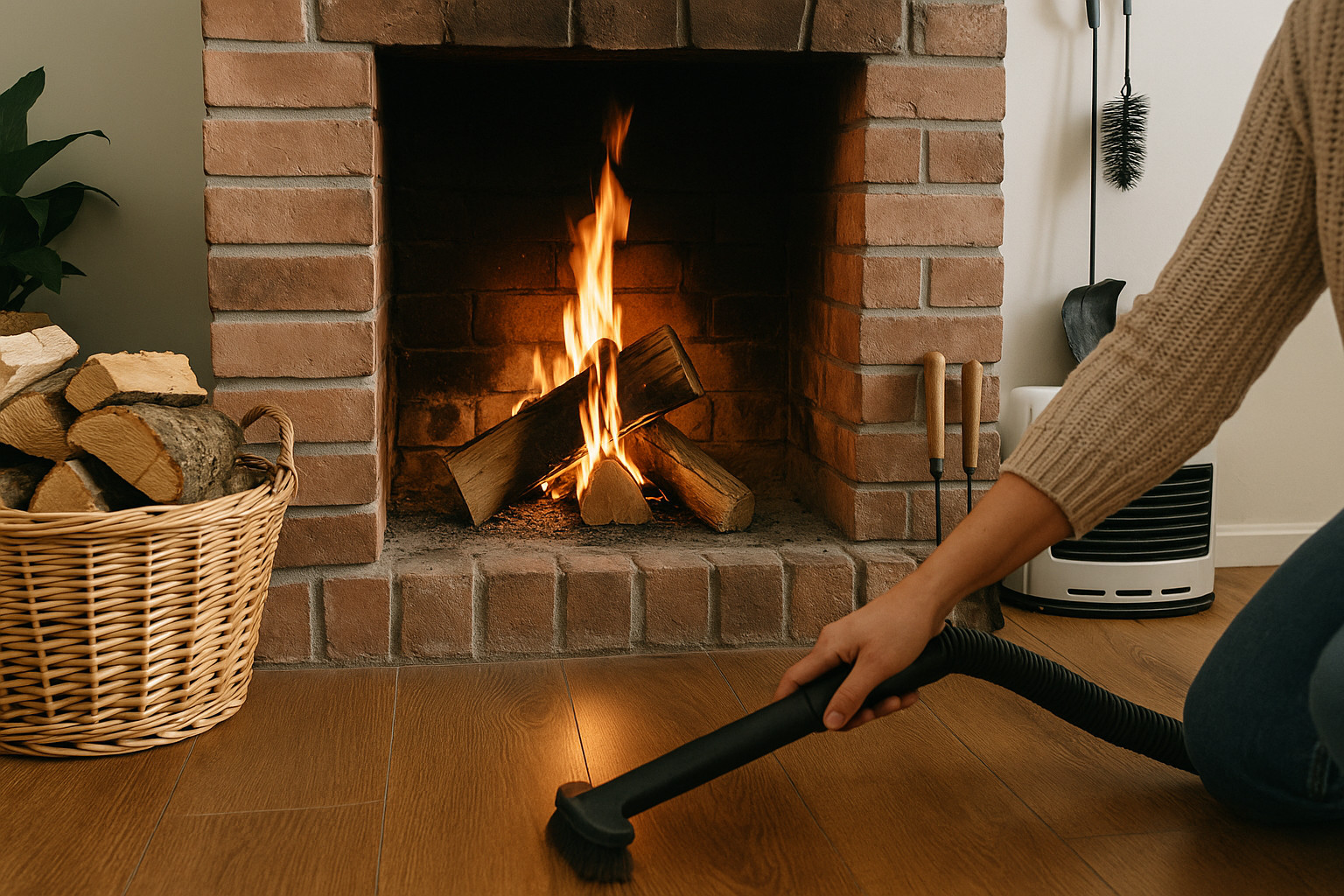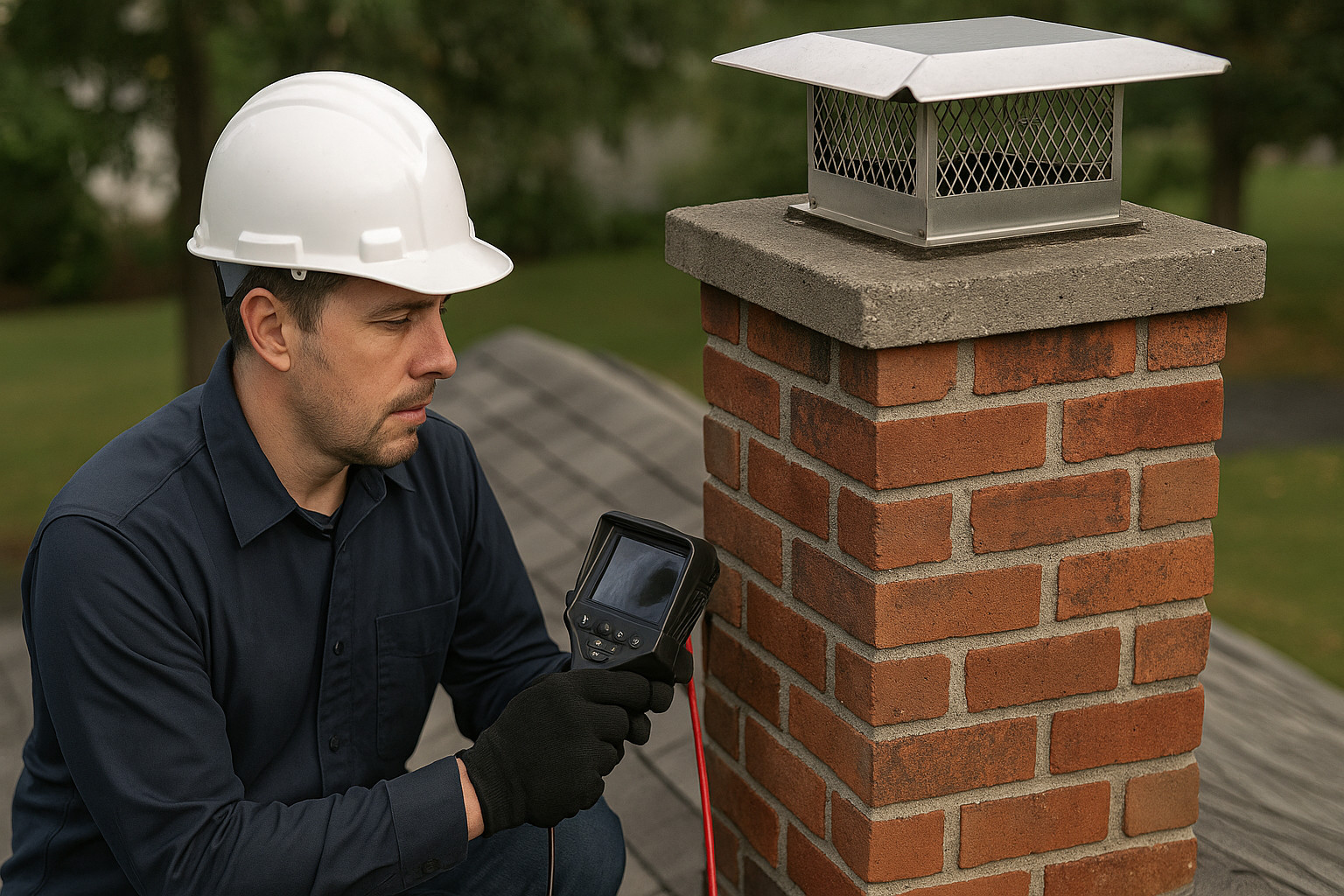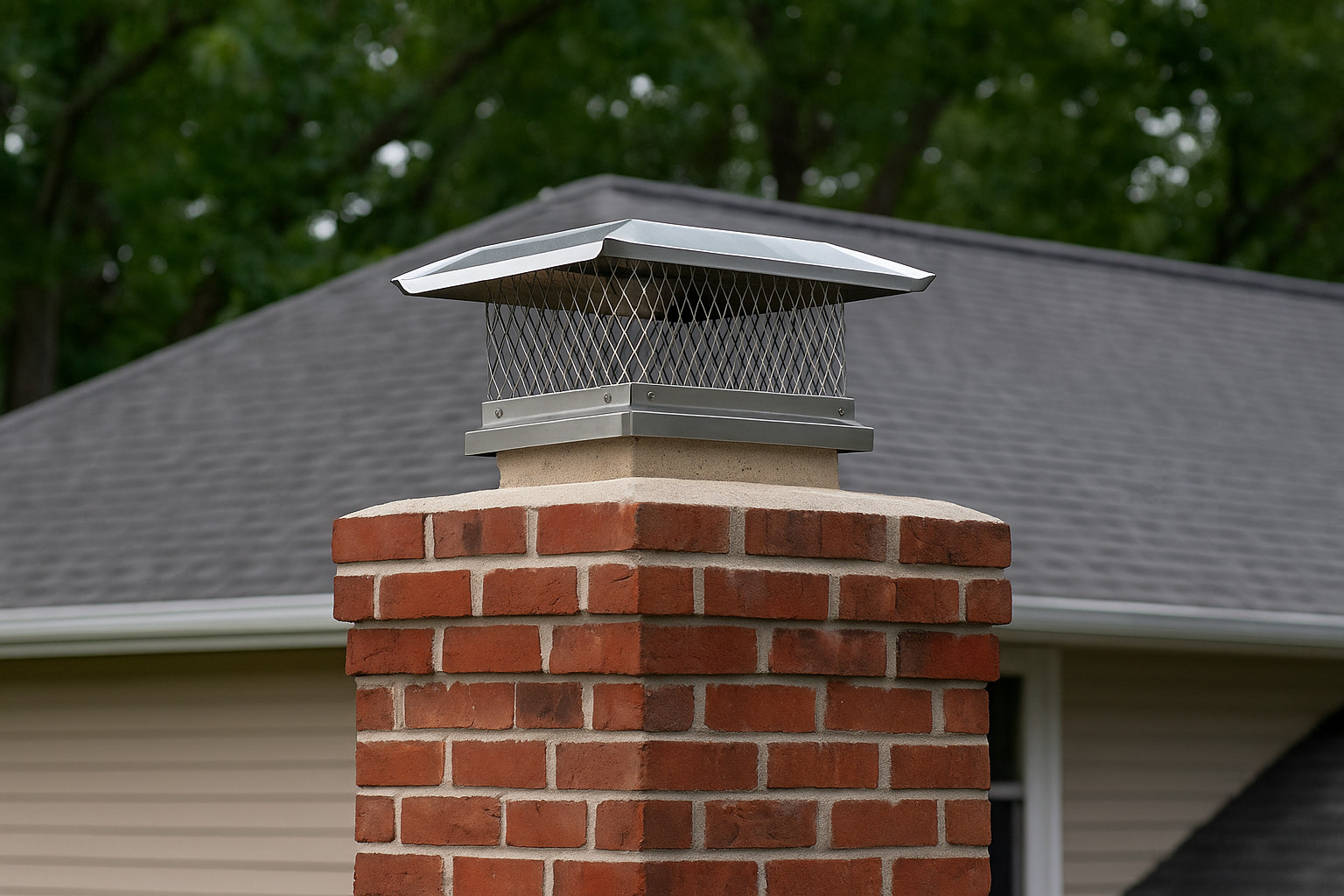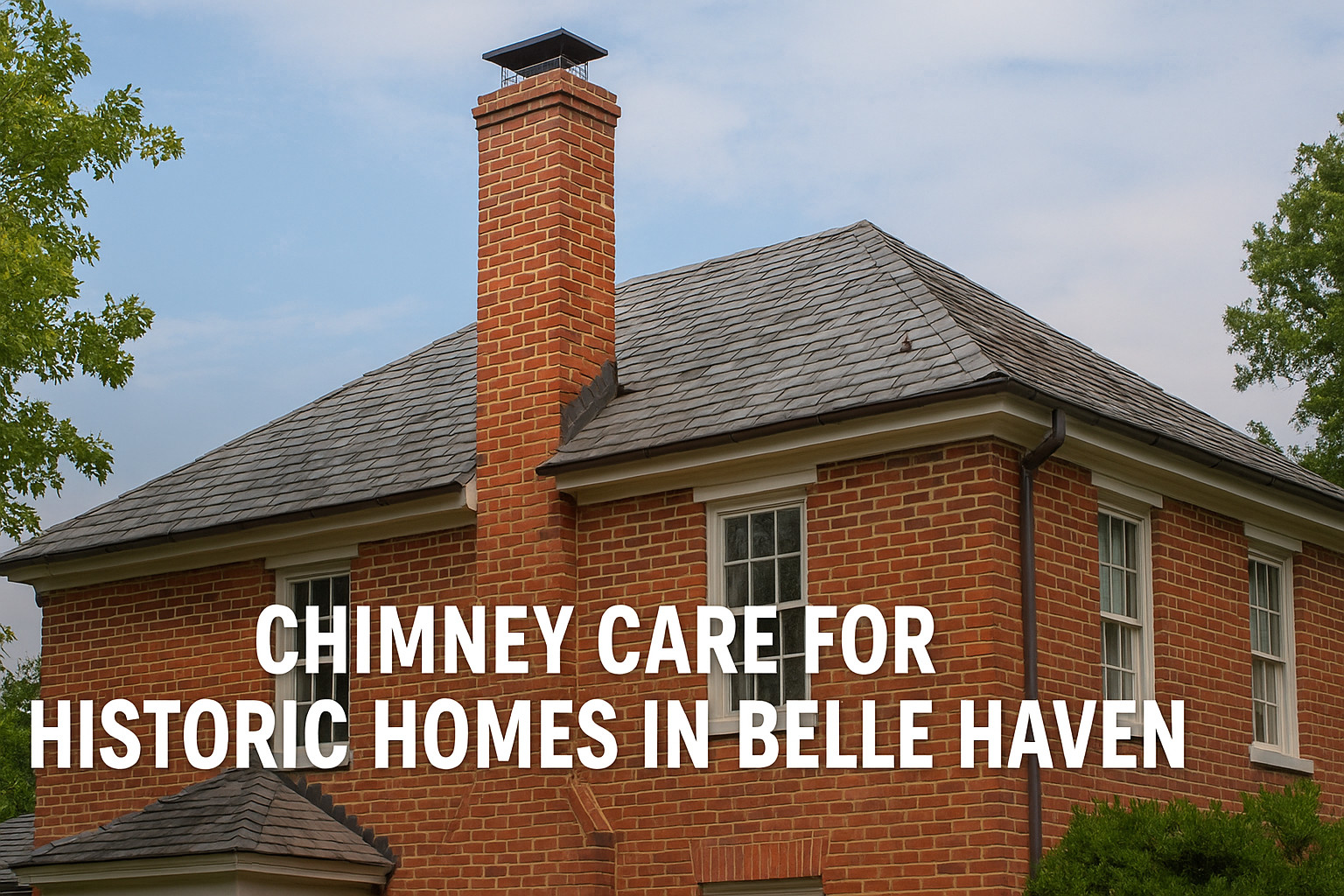Chimney Caps in Connecticut: Protecting Your Home from Costly Repairs
Chimney caps are a small but vital feature for Connecticut homes. They protect against water damage, animal intrusion, and debris buildup, ensuring your chimney stays safe, efficient, and long-lasting.
Share:
Table of Contents
When it comes to maintaining your chimney system, chimney caps are often the unsung heroes. A chimney cap may seem like a small feature, but it provides crucial protection against water damage, wildlife intrusion, and debris buildup. Homeowners in Connecticut, with its snowy winters and rainy seasons, face increased risks of moisture damage and blockages if their chimneys are left uncapped. Installing a quality chimney cap, whether stainless steel, copper, or galvanized steel, not only protects your chimney flue but also extends the life of your entire chimney structure. In this guide, we’ll explore why chimney caps are essential, how they safeguard your home, and how to choose the right one for your needs.
The Importance of Chimney Caps
A chimney cap acts as the first line of defense against the elements. Positioned at the very top of the chimney flue, it serves as a barrier that prevents rain, snow, and debris from entering. Without a proper chimney cap, your fireplace and chimney system are vulnerable to water damage, which can weaken the chimney crown and lead to costly repairs. Additionally, a cap acts as a spark arrestor, reducing fire hazards by preventing embers from escaping and landing on the roof.
Beyond water and fire prevention, chimney caps protect against animal intrusion. In Connecticut, raccoons, squirrels, and birds frequently find open chimneys an ideal place to nest, causing blockages that can lead to dangerous carbon monoxide buildup. A high-quality chimney cap helps maintain the structural integrity of your chimney while keeping your home safe and energy-efficient.
Preventing Moisture and Water Damage
Moisture is the number one enemy of any chimney system. Rainwater and melted snow can seep into cracks in the masonry or chimney crown, leading to spalling bricks, mortar joint erosion, and long-term structural damage. When water penetrates the flue liner or reaches the interior of your home, it can cause mold growth, rusted fireplace dampers, and damage to surrounding walls and ceilings.
Connecticut’s climate, with freezing temperatures, wet winters, and humid summers, exacerbates the freeze-thaw cycle. Water that enters your chimney expands when frozen, creating cracks that worsen over time. A well-installed chimney rain cap prevents water penetration by diverting rain away from the flue opening. For homeowners looking to protect their investment, a stainless steel chimney cap offers the best resistance against corrosion, while copper caps provide both durability and aesthetic appeal.
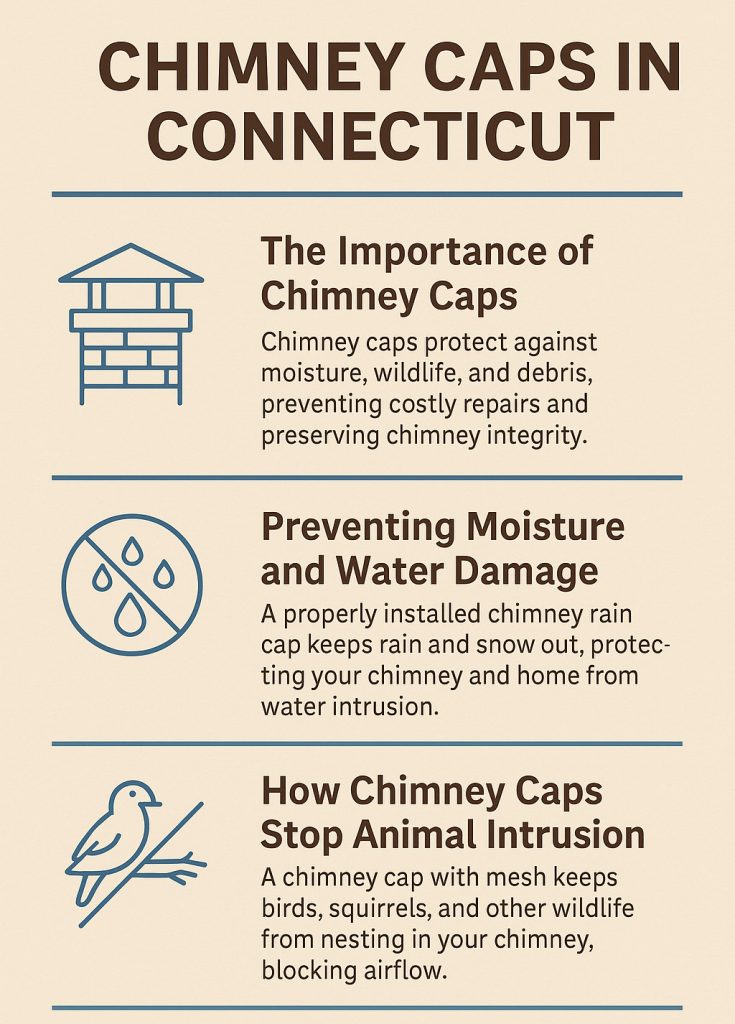
How Chimney Caps Stop Animal Intrusion
Animal intrusion is a common and often overlooked problem. Birds, squirrels, raccoons, and even bats see open chimneys as warm, sheltered spaces to build nests. These nests can cause blockages that restrict airflow, leading to smoke backing up into your living spaces and increasing the risk of carbon monoxide poisoning.
A chimney cap with a durable mesh screen blocks animals from entering while still allowing proper ventilation. In addition to preventing unwanted guests, this mesh acts as a spark guard, reducing the chances of roof fires caused by flying embers. For Connecticut homeowners, this dual-purpose design is critical for both safety and home protection.
Debris Control and Fire Safety
Leaves, twigs, and other windblown debris can easily find their way into an open chimney. Over time, this buildup creates blockages that restrict airflow and can result in dangerous chimney fires. A well-designed chimney cap not only keeps out debris but also helps prevent downdrafts, which occur when cold air or smoke re-enters your home through the flue.
Additionally, chimney caps act as spark arrestors, catching stray embers before they escape onto the roof or surrounding property. This simple safety feature significantly reduces the risk of accidental fires, especially during dry, windy conditions.
Selecting the Right Chimney Cap
Choosing the right chimney cap involves considering the type of chimney system, your budget, and the local climate.
Material Options – Stainless Steel, Copper, and Galvanized Steel
- Stainless Steel Chimney Caps: Highly durable, rust-resistant, and ideal for Connecticut’s harsh winters. These are the most popular choice due to their longevity.
- Copper Caps: Known for their aesthetic appeal and durability. Over time, copper develops a beautiful patina while providing excellent protection.
- Galvanized Steel: A budget-friendly option, though less resistant to corrosion compared to stainless steel or copper.
Single-Flue vs. Multi-Flue Chimney Caps
- Single-Flue Caps: Designed for chimneys with one flue, offering a snug fit and reliable protection.
- Multi-Flue Caps: Ideal for larger chimney systems or homes with multiple fireplaces, providing coverage for several flues at once.
Custom Chimney Caps for Unique Chimney Structures
For older or historic Connecticut homes, custom chimney caps can be tailored to fit unique masonry designs, ensuring both functionality and curb appeal.
Professional Installation vs. DIY
While DIY chimney cap installation might seem appealing, professional installation is strongly recommended. Certified chimney professionals ensure the cap is properly fitted to prevent draft issues, water leaks, or gaps that animals could exploit. Incorrect installation can also interfere with combustion gases, creating a dangerous buildup of smoke or carbon monoxide inside the home.
With Certified Chimney, you can trust that your chimney system will be evaluated for the right cap size, material, and style, ensuring long-lasting protection.
How Regular Inspections Prevent Long-Term Damage
Routine inspections by a certified chimney sweep ensure your chimney cap and entire chimney structure remain in excellent condition. Annual chimney cleaning and inspection help identify issues early, reducing costly repairs in the future.
Cost of Chimney Caps and Professional Services
The cost of chimney caps varies depending on material and size. On average:
- Stainless Steel Caps: $100–$250 (material only).
- Copper Caps: $300–$500 or more due to premium materials.
- Installation Services: Typically range from $150–$350, depending on complexity.
While the upfront cost may seem significant, chimney caps can save homeowners thousands of dollars by preventing water damage, structural deterioration, and animal removal fees.
Why Choose Certified Chimney in Connecticut?
Certified Chimney provides professional chimney services across Connecticut, including chimney cleaning, inspections, masonry repair, and chimney cap installations. Our team of certified professionals understands the unique weather challenges homeowners face in the region and uses high-quality, rust-resistant caps to ensure long-term protection.
Final Thoughts on Chimney Caps
A chimney cap is a small investment with enormous benefits, from preventing moisture damage to improving your chimney’s safety and efficiency. Whether you choose stainless steel, copper, or custom-designed caps, the key is proper installation and regular maintenance. For Connecticut homeowners, Certified Chimney offers the expertise and high-quality materials needed to keep your chimney system in excellent condition year-round.
Article details:
- Published by:
- Certified Chimney CT
- Published to:
- Last modified:
- October 2, 2025
Share:
Continue learning:

